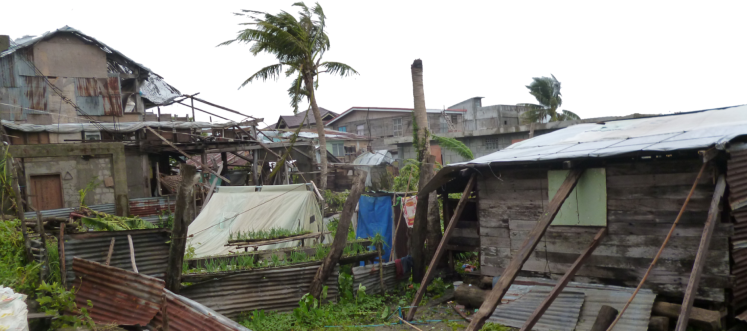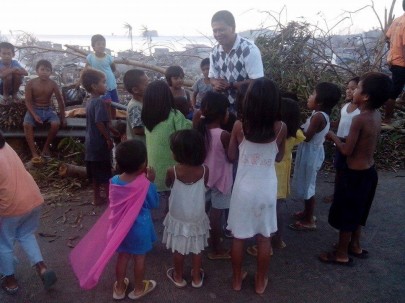
Context: Natural disaster, weakened child protection systems
Objectives:
- To identify the most vulnerable children and ensure their protection from the risks of abuse, trafficking and exploitation through the establishing and strengthening of child protection mechanisms
- To build the capacity of the local community and local authorities to effectively respond to child protection concerns
Why this project?
Eastern Samar is one of the poorest regions in the Philippines and acts as a transit point for trafficking for sexual exploitation and for child labour. Following the devastation of Typhoon Haiyan in 2013, child protection issues were exacerbated as families had lost their homes, livelihoods and resources, and infrastructure was severely damaged. PCMN sought to develop a response which would address the deeper child protection needs of the communities, in addition to the immediate relief needs resulting from the typhoon – PCMN staff noted that around 90% of the children identified as being in need of protection were actually at risk because of situations which existed before the typhoon.
The project
Targeted support for children in need of special protection

- During the initial needs assessment phase, PCMN church partners collected lists of separated, unaccompanied and at risk children and then carried out family tracing and reunification, and sought to place children with foster families. Help for the 50 most at risk children was provided through mentoring and support for caregivers, improvements to the child’s environment and material support for the child.
Safe families programme
PCMN noticed a gap in available, registered foster families able to take in children in need of care or protection. PCMN began training families and working to prepare them for taking in children and attaining the requirements for registration with social services.
Supporting and strengthening local government child protection systems
- Meeting with local councils and raising awareness of child protection issues
- Signing MOUs with local councils stating a commitment to create and/or improve child protection mechanisms in their towns
- Establishing or strengthening child protection committees in each town
- Supporting case management:
- PCMN provided a trained social worker to oversee the programme and provide support to local councils
- Para-social workers (volunteers) were trained by PCMN to act as a link between the community and local government, strengthening capacity for identifying cases and making referrals, and for follow-up visits and support
- Training and capacity building for local councils and child protection committees
- Advocacy to persuade actors such as civil society organisations, government and police to sign child protection policies developed by the committees
Building the capacity of the local community
Throughout all programmes PCMN sought to work through churches and local volunteers, as well as alongside existing community structures. Both education and protective responses are staffed by volunteers, and the ‘Children in Need of Special Protection’ programme has trained local volunteers to be para-social workers supporting the government social work response.
Working in partnership
PCMN has developed relationships with INGOs also working to strengthen child protection, and works in partnership with four other NGOs in delivering the broader ‘Restore Eastern Samar Together’ (REST) programme. Involvement in UN cluster meetings enabled the network to understand issues that may need more attention and to support the development of their relationships with government.
Impact
“PCMN are even more active than us [on child protection] because of the multiple tasks we have… they help us a lot, especially in following up of cases.”
Municipal Social Welfare and Development Officer
PCMN’s post-typhoon protection response had a deeper impact than some other child protection responses because it took account of the underlying protection issues facing children in Samar, and also recognised the gaps in local capacity for protecting children. By creating a programme with multiple elements, it was possible to refer children taking part in other programmes to child protection services. With its strong focus on building local capacity, PCMN was able to leave a better-functioning child protection system in place, as well as equip local volunteers with the skills and knowledge to respond in practical ways to vulnerable children.
PCMN partners with Viva. This project was part of the wider ‘Restore Eastern Samar Together’ (REST) programme.

How to avail your materials about the 5days curriculum about Safe Child (Disaster Prevention)?
LikeLike
Hi Anna, if you send your email address to me at k.mclelland@viva.org I can put you in touch with our Philippines team. Thanks!
LikeLike